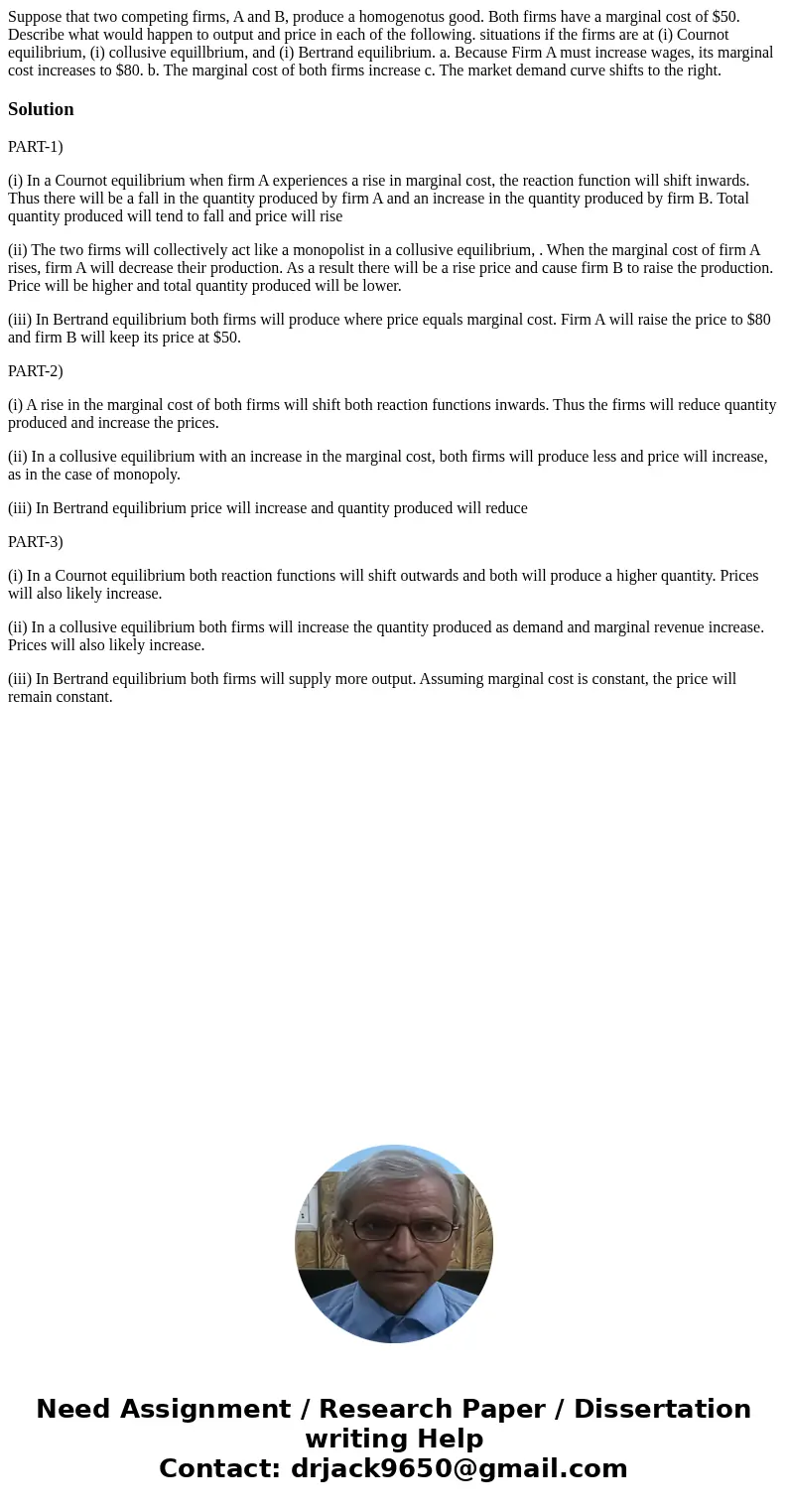Suppose that two competing firms A and B produce a homogenot
Solution
PART-1)
(i) In a Cournot equilibrium when firm A experiences a rise in marginal cost, the reaction function will shift inwards. Thus there will be a fall in the quantity produced by firm A and an increase in the quantity produced by firm B. Total quantity produced will tend to fall and price will rise
(ii) The two firms will collectively act like a monopolist in a collusive equilibrium, . When the marginal cost of firm A rises, firm A will decrease their production. As a result there will be a rise price and cause firm B to raise the production. Price will be higher and total quantity produced will be lower.
(iii) In Bertrand equilibrium both firms will produce where price equals marginal cost. Firm A will raise the price to $80 and firm B will keep its price at $50.
PART-2)
(i) A rise in the marginal cost of both firms will shift both reaction functions inwards. Thus the firms will reduce quantity produced and increase the prices.
(ii) In a collusive equilibrium with an increase in the marginal cost, both firms will produce less and price will increase, as in the case of monopoly.
(iii) In Bertrand equilibrium price will increase and quantity produced will reduce
PART-3)
(i) In a Cournot equilibrium both reaction functions will shift outwards and both will produce a higher quantity. Prices will also likely increase.
(ii) In a collusive equilibrium both firms will increase the quantity produced as demand and marginal revenue increase. Prices will also likely increase.
(iii) In Bertrand equilibrium both firms will supply more output. Assuming marginal cost is constant, the price will remain constant.

 Homework Sourse
Homework Sourse